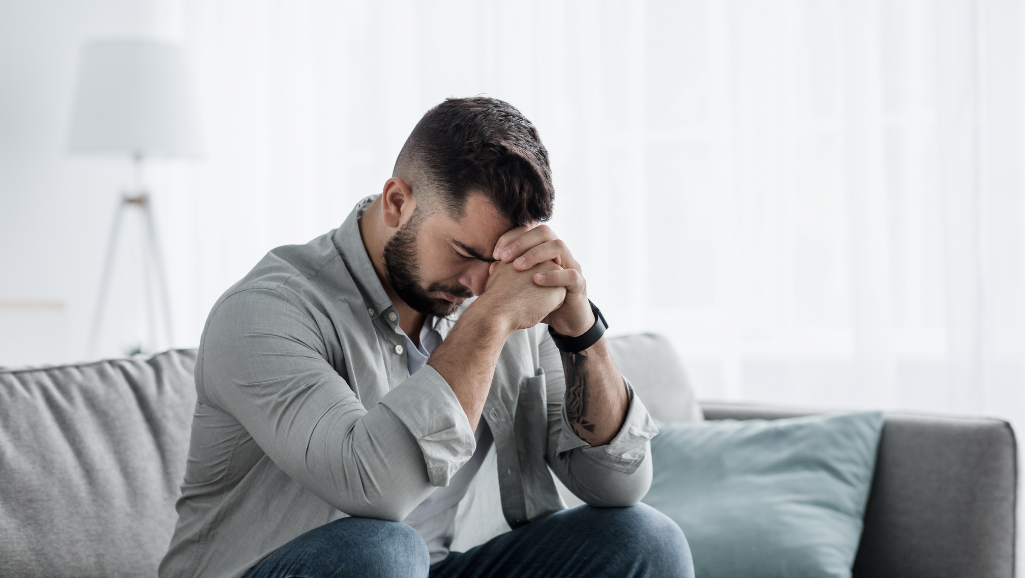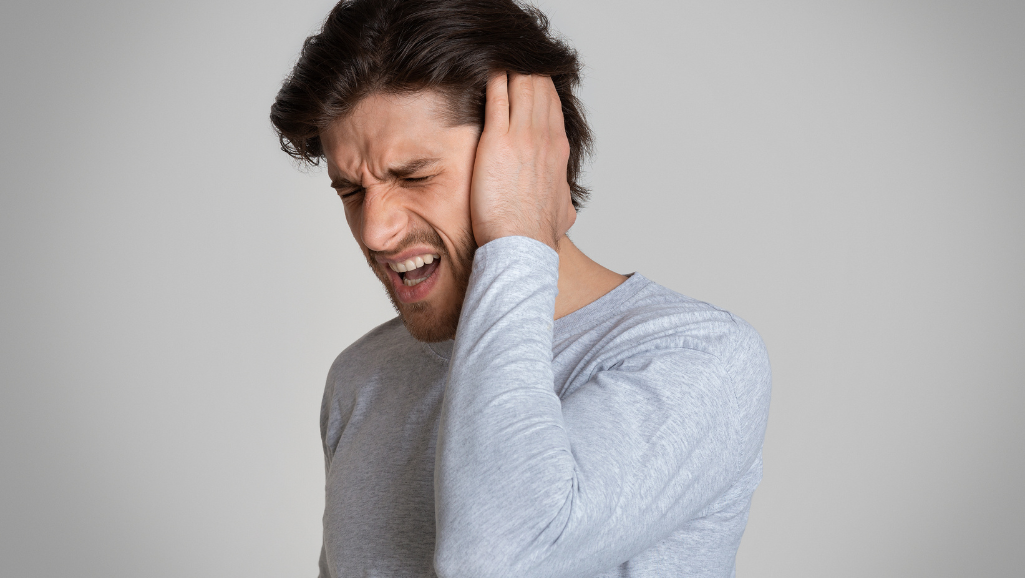Modern life brings challenges that test our mental and physical resilience. Whether it’s work demands, family responsibilities, or unexpected pressures, our bodies react in ways that impact daily well-being. Recognizing the difference between temporary tension and persistent unease is the first step toward better health.
A 43-year-old entrepreneur’s story from Clinical Partners highlights how unchecked strain can disrupt productivity and relationships. The body’s fight-or-flight response, triggered by difficult situations, may lead to faster heartbeat, fatigue, or digestive issues. While short-term reactions are normal, long-term effects require attention.
Effective management starts with awareness. Simple practices like yoga, mindful breathing, or setting boundaries can restore balance. This guide explores symptoms, responses, and practical solutions to help you regain control.
Key Takeaways
Stress vs Anxiety.
- Stress and anxiety trigger physical and emotional responses.
- Short-term tension differs from chronic unease.
- Symptoms include rapid heartbeat and difficulty focusing.
- Management techniques include exercise and relaxation.
- Early recognition prevents long-term health impacts.
What Is Stress vs Anxiety? Key Definitions
Life’s demands often push us into survival mode, triggering natural responses. While these reactions share similarities, their roots and impacts differ. Understanding them helps you take the right steps toward balance.
Stress: The Body’s Immediate Alarm System
Stress is your body’s short-term response to external pressures. Think of a looming deadline or a sudden conflict. Your heart races, muscles tense, and focus sharpens—all part of the fight-or-flight reaction.
Unlike chronic unease, stress fades once the trigger passes. It can even motivate action, like preparing for a presentation. But when ignored, it may fuel longer-term struggles.
Anxiety: The Lingering Sense of Dread
Anxiety lingers like a shadow, often without a clear cause. It’s the “what if” spiral—worrying about job loss despite steady performance. Physically, it mirrors stress (sweating, rapid heartbeat), but the difference lies in its persistence.
As experts note, unmanaged stress can evolve into anxiety, creating a pipeline from temporary strain to chronic unease.
“Stress is like a flat tire—fixable. Anxiety is fearing every bump in the road will blow another.”
Spotting the Symptoms: Stress vs Anxiety
Your body sends signals when something feels off—learning to read them is crucial. Shared symptoms like a racing heart or upset stomach might seem similar, but their roots and durations differ. Pinpointing these clues helps you respond effectively.
Physical Signs You Shouldn’t Ignore
Tension headaches often stem from short-term pressure, like meeting a deadline. In contrast, dizziness or chest tightness may indicate prolonged unease. The DSM-5 notes that excessive fatigue or muscle pain lasting months could signal deeper concerns.
Try a quick body scan: Close your eyes and notice areas of tightness. Jaw clenching? Shallow breathing? These are silent cries for attention.
Emotional and Behavioral Red Flags
Feeling overwhelmed by a stressor (e.g., a work project) differs from irrational fears, like doubting every decision. Behavioral shifts matter too. Procrastination might reflect temporary overload, while avoiding social events often hints at chronic worry.
“Physical symptoms are the body’s way of waving a red flag—don’t dismiss them.”
Watch for irritability or sudden panic. These emotional flares, paired with changes in sleep or appetite, demand action. Simple steps—like paced breathing or a walk—can reset your system.
How Stress and Anxiety Affect Your Daily Life
Everyday pressures shape how we think, feel, and interact with the world. Chronic strain can reduce cognitive function by 25%, making even simple tasks feel overwhelming. A Harvard study found that prolonged cortisol spikes impair memory and decision-making—like a fog clouding your judgment.
In the workplace, unchecked tension costs U.S. businesses $42 billion yearly. Missed deadlines, strained teamwork, and disengagement often trace back to unmanaged pressure. One entrepreneur described it as “running on a treadmill that never stops.”
Anxiety’s ripple effect extends deeper. Sleep suffers, weakening immunity. Relationships fray under constant irritability. The body pays the price—headaches, digestive issues, and fatigue become frequent visitors.
“Burnout isn’t just exhaustion—it’s emotional numbness, sarcasm replacing laughter, and dread replacing curiosity.”
Spotting early signs helps. Apathy toward hobbies, cynicism at work, or feeling detached from loved ones signal it’s time to pause. Small steps—like setting boundaries or taking mindful breaks—can restore balance before the weight becomes unbearable.
Proven Strategies to Manage Stress and Anxiety
Taking charge of your well-being starts with practical, science-backed tools. Whether you need instant calm or lasting resilience, these methods adapt to your life. Research shows that 12-week CBT programs cut symptoms by 50%, while diaphragmatic breathing slashes cortisol in minutes.
Quick Relaxation Techniques for Immediate Relief
4-7-8 breathing works like a reset button. Inhale for 4 seconds, hold for 7, exhale for 8. Pair it with muscle tension release: clench your fists for 5 seconds, then relax. Harvard studies confirm this drops stress hormones fast.
Apps like Calm guide mindfulness, while Woebot tracks patterns. Even 5 minutes of progressive muscle relaxation—tightening and releasing each body part—beats mental fog. Journaling or pet cuddles also offer quick relief.
Long-Term Lifestyle Changes That Make a Difference
Sleep hygiene is foundational. Try blue-light filters post-sunset and magnesium-rich foods like almonds. Regular qi gong builds “stress inoculation,” teaching your body to adapt.
Exercise isn’t just for fitness—it’s a therapy tool. A jog releases endorphins, and the Pomodoro Technique prevents burnout. Small shifts, like morning sunlight or saying “no” to overload, compound into lasting change.
“You can’t stop the waves, but you can learn to surf.”
When to Seek Professional Help
Recognizing when daily struggles cross into clinical territory can change lives. Over 40 million Americans experience anxiety disorders, yet many dismiss symptoms as normal stress. The line between temporary reactions and chronic conditions becomes clear through specific patterns.
Warning Signs of Chronic Conditions
The DSM-5 outlines clear markers for generalized anxiety disorder: excessive worry lasting 6+ months, plus three symptoms like restlessness or fatigue. Compare these to temporary reactions:
- Situational stress: Nervousness before public speaking that fades afterward
- Disorder: Persistent fear of social interactions for months
PHQ-9 assessments reveal severity. Scoring 10+ suggests moderate impairment—difficulty concentrating at work or withdrawing from hobbies. Physical red flags include panic attacks with chest pain or dizziness without medical cause.
Effective Treatment Options to Explore
Modern approaches offer hope. Cognitive Behavioral Therapy (CBT) helps reframe negative thoughts in 12-16 sessions. For trauma-related cases, brainspotting uses eye positions to process memories.
SSRIs like Lexapro regulate serotonin gently, with 60% efficacy when combined with therapy. Unlike sedatives, they don’t cause drowsiness but may take 4-6 weeks for full effect.
“Medication opens the window, but therapy teaches you how to climb through it.”
Start the conversation with doctors using clear scripts: “I’ve had trouble sleeping and focusing for three months—could we explore options?” Employers respond well to: “I’m managing a health condition and may need flexible hours.”
Conclusion: Taking Control of Your Mental Well-Being
Small steps lead to big changes in your mental health. Studies show 89% of people feel better after six months of using proven strategies. Progress matters more than perfection—celebrate every win.
One entrepreneur rebuilt their life by focusing on daily activities that calm the mind. Their story proves healing is possible. You deserve the same hope.
Your feelings matter. If challenges persist, reach out for help. Connecting with supportive people makes the journey easier. Remember: “Courage isn’t the absence of fear, but moving forward anyway.”










